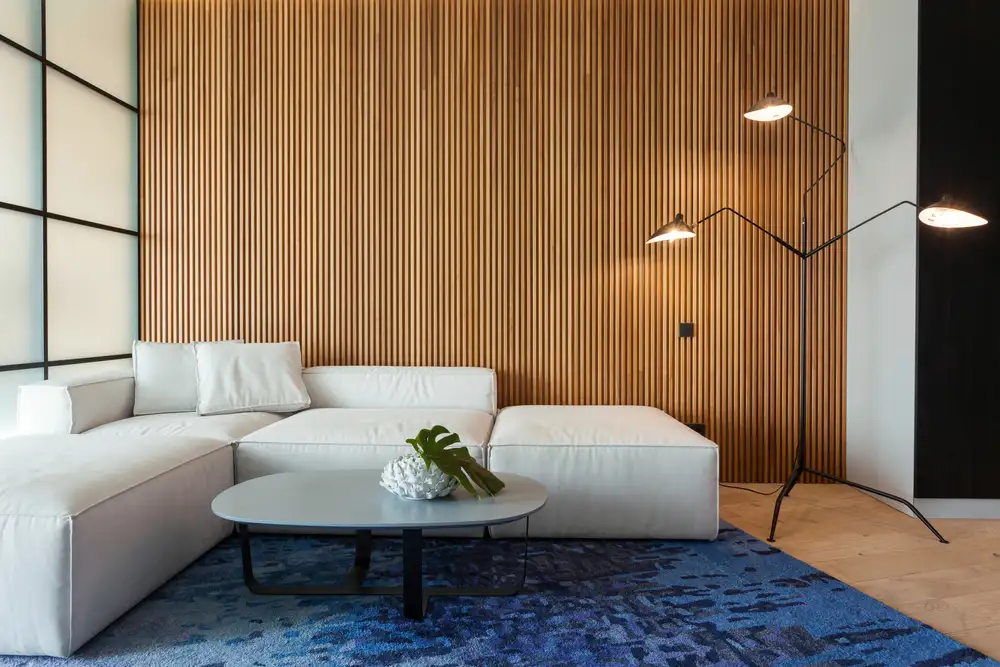In recent years, wall panels have emerged as a popular choice for homeowners seeking to combine aesthetic appeal with functional benefits. Modern interiors demand solutions that are not only visually appealing but also practical, durable, and easy to maintain. Wall panels fulfill all these requirements, making them an ideal option for contemporary homes. They provide a versatile way to enhance the design of any space while ensuring long-term durability and convenience. This article explores the advantages, types, design ideas, and installation tips for wall panels in modern homes.
Advantages of Wall Panels in Modern Interiors
Wall panels offer numerous benefits that make them an attractive choice for modern homes. One of the primary advantages is their ability to transform a space aesthetically. With a variety of textures, finishes, and materials available, wall panels can create a sense of depth, warmth, and sophistication. They can be used to accentuate specific areas, highlight architectural features, or establish a cohesive design theme throughout a home.
Another advantage is durability. Many wall panels are made from high-quality materials such as PVC, MDF, wood, or composite substances, which resist wear, moisture, and impact. This makes them suitable for high-traffic areas such as living rooms, kitchens, and hallways, as well as moisture-prone spaces like bathrooms. Unlike traditional paint or wallpaper, wall panels maintain their appearance over time and require minimal upkeep.
Wall panels also contribute to practical home management. They can provide insulation, soundproofing, and protection for walls against scratches, stains, and humidity. Some panels are designed with integrated acoustic properties, making them ideal for media rooms, offices, or bedrooms where noise reduction is essential. Additionally, panels can conceal uneven wall surfaces, wiring, or structural imperfections, eliminating the need for costly repairs or extensive renovations.
Types of Wall Panels for Modern Homes
Modern wall panels come in a wide range of materials, styles, and finishes. Choosing the right type depends on the intended function, aesthetic preferences, and budget.
PVC panels are popular due to their affordability, water resistance, and low maintenance. They are lightweight, easy to install, and available in various textures, colors, and patterns. PVC panels are particularly suitable for kitchens, bathrooms, and other areas exposed to moisture.
Wooden panels provide a classic, warm aesthetic while offering durability and versatility. Options range from natural hardwood to engineered wood or veneer finishes. Wooden panels can be installed as full wall coverings, accent panels, or decorative features, adding a touch of elegance to living rooms, bedrooms, and dining areas.
MDF (medium-density fiberboard) panels are a versatile choice for contemporary interiors. They can be molded into intricate patterns, geometric designs, or sleek, minimalist finishes. MDF panels are cost-effective and can be painted, laminated, or veneered to match the desired decor. They are often used for feature walls, wainscoting, or ceiling accents.
Metal panels, though less common, offer a modern industrial look. They are durable, easy to clean, and available in stainless steel, aluminum, or copper finishes. Metal panels are often used in kitchens, offices, or commercial spaces where a sleek, contemporary appearance is desired.
Composite panels combine materials like wood, plastic, and resin to deliver the benefits of multiple components. They offer durability, moisture resistance, and design flexibility, making them suitable for both interior and exterior applications.
Design Ideas for Wall Panels
The versatility of wall panels allows homeowners to experiment with various design ideas to enhance modern interiors. One popular approach is creating feature walls. By using textured, patterned, or contrasting panels, a single wall can become a focal point in a room, drawing attention and adding visual interest without overwhelming the space.
Geometric designs are another modern trend. Panels with three-dimensional patterns or angular shapes create depth and dimension, giving rooms a contemporary and dynamic appearance. These designs work well in living rooms, bedrooms, or hallways, where they can be paired with minimalist furniture for a balanced aesthetic.
For a sophisticated look, consider wood or wood-effect panels with a natural finish. Horizontal or vertical arrangements can influence the perception of space, making rooms appear larger or taller. Mixing different materials, such as wood with metal or glass panels, can also create a striking visual effect that blends warmth with modernity.
Wall panels can also serve functional design purposes. Acoustic panels with stylish finishes provide both sound absorption and decorative appeal, making them perfect for media rooms, home offices, or open-plan living areas. Similarly, panels with built-in storage solutions or modular designs offer a combination of style and practicality, helping to reduce clutter and maximize space efficiency.
Installation Tips for Wall Panels
Installing wall panels requires careful planning to ensure a professional finish and long-lasting results. Start by preparing the wall surface, making sure it is clean, dry, and free from dust or imperfections. Uneven walls can be leveled with filler or by using panels that include spacers or mounting frames.
Measure the wall accurately and plan the layout to minimize cuts and waste. Consider the direction of panel installation, whether vertical, horizontal, or patterned, as it affects both appearance and structural stability. Dry-fit panels before applying adhesive or fasteners to confirm alignment and spacing.
Depending on the panel type, installation methods vary. PVC and lightweight panels can often be mounted using adhesive or click-lock systems, while heavier wooden or MDF panels may require screws, nails, or specialized brackets. For large or complex installations, professional assistance may be advisable to ensure proper alignment, secure attachment, and a polished finish.
Finishing touches, such as trim, edging, or molding, help conceal gaps and enhance the overall look. Some panels come with pre-finished edges, while others may require additional components for a seamless appearance. Regular maintenance, such as dusting or wiping with a damp cloth, keeps panels looking fresh and preserves their durability.
Sustainability and Eco-Friendly Options
Many modern wall panels are designed with sustainability in mind. Eco-friendly materials, such as recycled wood, bamboo, or low-VOC MDF, offer environmentally conscious choices without compromising on quality or aesthetics. Choosing panels made from renewable resources or recyclable materials contributes to reducing environmental impact and promotes responsible home design practices.
Additionally, durable panels reduce the need for frequent replacements or repainting, conserving resources over time. Homeowners can balance style, function, and sustainability by selecting materials that align with both design goals and environmental considerations.
Combining Wall Panels with Interior Design Elements
Wall panels can be seamlessly integrated with other interior design elements to create cohesive, stylish spaces. For example, combining panels with lighting fixtures enhances texture and highlights patterns, creating dramatic effects in living rooms or hallways. Similarly, pairing panels with artwork, mirrors, or shelving units can add dimension and visual interest while maintaining functionality.
In modern homes, open-plan layouts benefit from wall panels that delineate spaces without the need for physical partitions. Panels can define dining areas, create office nooks, or frame entertainment zones, providing structure and style simultaneously. The ability to combine aesthetics with practicality makes wall panels a versatile tool in contemporary interior design.
Maintaining Wall Panels for Longevity
Maintaining wall panels is generally simple, contributing to their popularity in modern homes. Regular dusting and occasional cleaning with mild solutions keep panels looking new. For wooden panels, periodic polishing or oiling may be necessary, while PVC and metal panels require minimal maintenance. Avoid using harsh chemicals or abrasive materials that could damage the surface.
Inspection for minor damage, such as scratches or loose panels, allows for timely repairs and extends the lifespan of the installation. With proper care, wall panels can retain their visual appeal and structural integrity for many years, making them a worthwhile investment in home design.
Conclusion
Wall panels are a practical and stylish solution for modern homes, offering aesthetic flexibility, durability, and functional benefits. From luxurious wooden panels to moisture-resistant PVC, geometric MDF designs, and sound-absorbing options, there is a panel type to suit every taste and requirement. By carefully selecting materials, planning layouts, and integrating panels with interior design elements, homeowners can create spaces that are visually appealing, comfortable, and long-lasting.
The combination of durability, ease of maintenance, and versatility makes wall panels an ideal choice for contemporary living. Whether used to highlight a feature wall, improve acoustics, or define spaces, they provide both functional and decorative value. Modern homes benefit from wall panels not only for their style but also for their ability to enhance overall practicality and efficiency.
With thoughtful design, quality materials, and proper installation, wall panels can transform ordinary walls into standout features, elevating the interior aesthetic and providing lasting enjoyment. They represent a smart investment for homeowners who seek beauty, functionality, and durability in their living spaces.






Leave a Reply